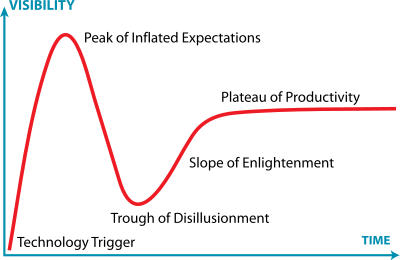Multichannel retail is exciting for customers and quite scary for many retailers. It brings with it new opportunities and new threats. It is about change in customer shopping habits. Yet it is vital for the retailer not to lose sight of the customer’s fundamental needs, which actually haven’t changed. This is the first in a series of articles looking at the pros and cons of multichannel retail, what are the potential pitfalls and risks and how it can boost profits for those who get it right.
Last year, I visited a pub that refused to take credit cards. Intrigued, I asked why and the owner explained that he was quite resistant to the banks taking a percentage of what should be his money, he didn’t feel it was right. Not too long afterwards the pub closed down. Unfortunately he missed the fact that regardless of his own feelings, his customers had changed, they wanted and needed to pay by credit card and by refusing to change with them his business suffered.
Change is of course a part of every business, and recognising how your customers are changing is vital for any business owner. It’s not necessarily easy though. Change is not always that obvious. At first change, especially change driven by technology, can be surrounded by lots of hot air and hype, and then gradually become reality, creeping up over several years.
Gartner identified this route to change in their Hype Cycle, which shows what happens with many new technologies; Internet, 3G phones (remember that hype?) and others. Multichannel Retail follows this curve. Where the potential for the technology is written about by an excited press before companies have a chance of making the potential benefits a reality. This creates peak of inflated expectation followed by disillusionment when people try out the new technology. This happened with the Internet when we had dial up connections and poor quality websites and search engines. But then the functionality improves over a period of years. This is the risky part. Those who haven’t changed in the initial rush can be caught out as the wave of change is slow and steady yet powerful and gets less publicity.
Multichannel retailing itself is not a new change, it was over 35 years ago Argos recognised a market where customers wanted to browse at home and buy in store. They successfully addressed that market with their catalogues and shops. The wider emergence of integrated multichannel retailing is more recent, being driven by the expansion of the Internet as a new selling channel. For example, the Internet now represents a third of Argos’ overall sales (with the Check & Reserve service key to this growth which underlines the importance of it being multichannel not just internet).
What is multichannel retail?
Multichannel retailing is firstly about the customer. It is about recognizing that many of today’s consumers want multiple touch points with their retailers when and where they want them. These touch points can include the shop, Internet, telephone or smartphone. A multichannel retailer will aim to offer a consistent brand presence no matter which touch point the customer uses.
Now if a retailer only offers say, two touch points (shop and phone) and the consumer uses four touch points (shop, phone, web and smartphone) then the retailer is missing out on revenue opportunities, and risks losing that customer to a competitor with the right touch points.
Mark Lewis, chief executive of Collect + said “Our research has shown that retailers must continue to adapt to offer services that fit in with busy commuter lives if they are to maintain customer loyalty.”
This change in consumer shopping habits allows retailers the opportunity to engage with their customers more than ever before, across different touch points. If they get it right they can really grow their businesses, but there is a risk if they don’t they can lose customer’s loyalty.
What does the customer want?
If multichannel retail is really about the customer, what does the customer want? Well they want what they have always wanted: 1) good service, 2) convenience and 3) value for money (VFM).
In the early days of the Internet, even up until quite recently, the Internet was viewed by many in retail as a disruptive new technology. There was talk of customers abandoning stores and buying most products and services over the Internet at the cheapest possible prices. It was all about price. But with the rush to get online, the technology driving the websites was not refined; this had a negative impact on quality and service.
Now things have changed. The pendulum may have swung away from the core customer requirements of Service, Convenience and VFM for a while as people chased cheapest prices in the excitement of this new shopping channel. However the pendulum has now returned to a happier medium reflecting the tradition customer values.
The second article on successful multichannel retail looks at an example of how one of the most successful multichannel retailers in the UK focuses on these core values and not on price. They maintain margins, deliver a high quality of service and are growing rapidly in doing so.
